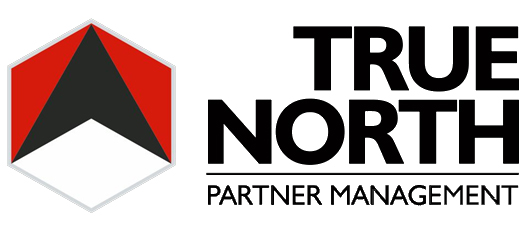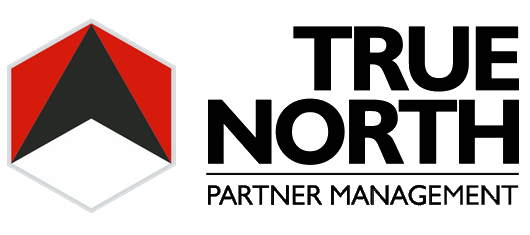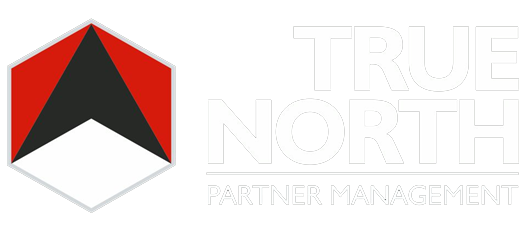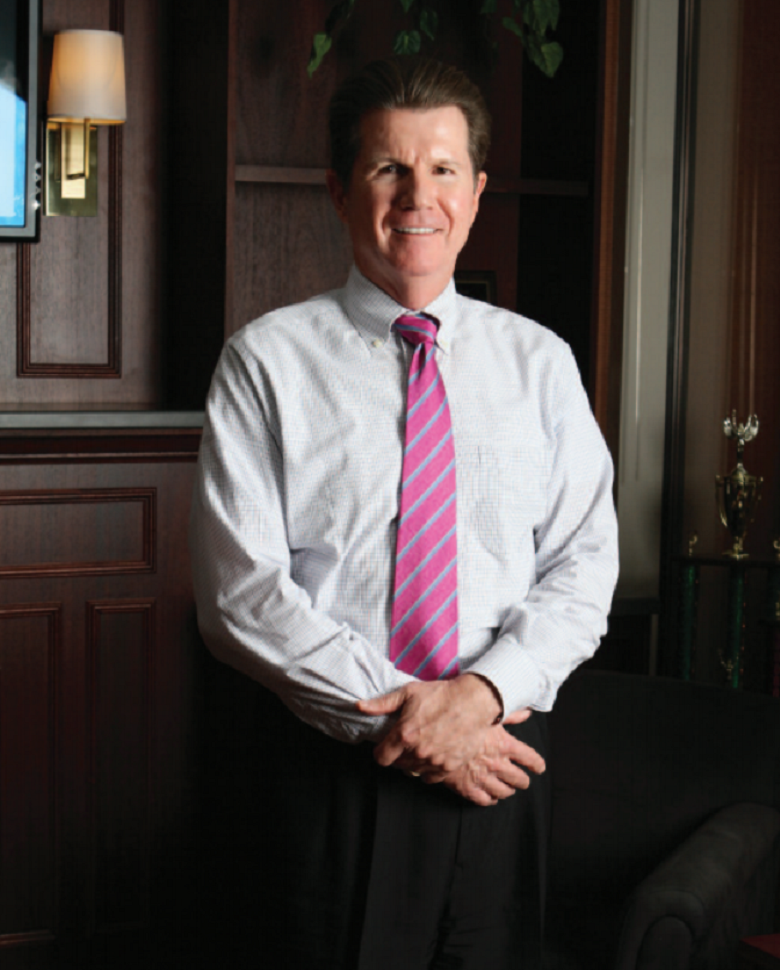The following post originally appeared on Forbes | November 4, 2015
When you’re young, you’re not afraid of what comes next. You’re excited by it. ~Dave Grohl
It was the late 80′s, and two venture capital attorneys were sitting at a small kitchen table somewhere outside of Richmond, VA. Reviewing, again, their plan for going off on their own, they finally found the courage to pull the trigger. The plan was clear cut: keep it small; only do venture capital work; love what they do; and remain friends no matter what. But as rubber met the road, the world would have its own say about their plan.
The market didn’t want just venture capital attorneys. There were other types of work that came along with their deals; outsourcing to other firms was cumbersome, and wasn’t bearing the fruit they’d hoped for. Further, their method of financing the operation – credit card advances – was of growing concern. Nevertheless, two powerful things came about from these challenging beginnings: First, the strategy of this small firm needed to change. Second, the firm’s values did not.
Gary LeClair and Dennis Ryan were young attorneys at the time, and exuded all of the energy and flexibility that often comes along with that age. They were able to run lean, react quickly, and with the strong foundation of their share values, build a law firm that has grown more than 100 times in size since its inception in 1988.
Today, still a young firm by BigLaw standards, LeClairRyan continues to rely on its values, its flexibility, its excitement about the ever shifting market, and now seasoned strategizing to further solidify its position in the complex legal market. Today we hear from Gary LeClair, co-founder and name partner of his eponymous firm, about LeClairRyan’s culture, strategy, brand, and third-party financing, among other things. See our exchange below:
On Where They Fit Into The Legal Landscape
Parnell: One of the major challenges facing law firms today is differentiation. I’ve spoken about this before, but without good clean lines by which to define your law firm, it is difficult to know where to start differentiating…
LeClair: At the moment, and to simplify and generalize, we differentiate on either price – and all of its components, such as low hourly rates, lean staffing, and “win-win” AFAs – or on value – and all of its components, such as client and industry insights, reach, breadth, depth, proximity, accessibility, etc.
Where value is equivalent, we offer a lower price. Where price is equivalent, we offer a higher value. The price or value differentiation depends on whether we are competing with an AmLaw 200 firm or a non-AmLaw 200 firm. We sit in the middle of the industry and compete both up and down. When we compete with an AmLaw 200 firm, we assume value is equivalent, so we offer a lower price. When we compete with a non-AmLaw 200 firm, we assume price is equivalent, so we offer a higher value. If we execute on our “better, faster, cheaper” brand strategy, and that’s a big “if,” we hope to be able to differentiate from most of our competitors on both price and value, not one or the other.
Understanding our differentiation requires an understanding of our framework for the industry, which uses a 5-tiered pyramid. Our tier 1 is bet-the-company; tier 2 is expertise and reputation; tier 3 is bread and butter; tier 4 is high volume commodity; and tier 5 is legal process outsourcing. So for a large pharmaceutical company such as GlaxoSmithKline, the merger that created GSK is bet-the-company tier 1 work; its IP litigation is tier 2; its patent prosecution is tier 3; product liability defense is tier 4; and e-discovery is tier 5.
If we’re competing with an AmLaw 100 firm for tier 3 work, we believe we offer equivalent value at a lower price. Price is the differentiator. If we’re competing with a small local firm for tier 1 work, we believe we offer higher value at an equivalent price. Value is the differentiator.
On Sorting The Market
Parnell: So, as a firm, how do you sort the legal consumption market?
LeClair: Broadly simplified, we group clients into two buckets: Inc. clients — typically local small and mid-market clients — and Fortune clients – typically big national and global companies. With Fortune clients, we strategically target tiers 2, 3, and 4. We don’t strategically target tier 1 work for Fortune clients. For us, it’s a suboptimal allocation of resources to try to unseat the incumbent top firms for bet-the-company work. “No one was fired for hiring IBM” is alive and well in tier 1 work for Fortune clients. If it happens – if a big case is filed in our backyard – that’s great, and we’d be opportunistic in accepting the work, assuming we were capable. But tier 1 work for Fortune clients is not a strategic priority. For tiers 2, 3, and 4, general counsel of Fortune clients understand that a firm like ours is a safe choice and offers at least equivalent value to the big firms. That’s why a group like AdvanceLaw is making headway with Fortune clients. For Inc. clients, we strategically target tiers 1, 2, and 3. They don’t have a lot of tier 4 or tier 5 work. Again, we’d be opportunistic if an Inc. client sent us tier 4 or tier 5 work, but that work is not a strategic priority.
We also strategically target work we consider to be defensible. That’s why we exited the tier 5 e-discovery work for Fortune clients and transferred our practice to UnitedLex. It was not defensible. We were competing with well capitalized, venture-backed non-law firm legal services providers such as UnitedLex. We were not willing to invest the $10 million plus required to have state-of-the-art processing, hosting, and early-case assessment.
On Their Brand
Parnell: With where you’ve positioned yourself in the market in mind, how are you branding yourself?
LeClair: We are branding ourselves as a multi-tier firm that offers equivalent or higher value at each tier, priced equivalent to or below the competition at each tier.
That requires that we manage our overhead. Like our clients, we have to drive cost out of our model. I’m sitting in a glass front, one-size-fits-all 10 x 12 office that’s identical — including the same standard modular furniture — to the office of the new associate who started yesterday. Compared to our peers, we’re in the bottom decile on overhead per lawyer. But like our clients, we still need to do more.
We also must manage our labor cost at each tier. All else being equal, we can’t pay an associate doing tier 4 work at $200 per hour as much as we can pay an associate doing tier 2 work at $400 per hour. Stated differently, we can’t pay associates based on years of practice or the number of lawyers in our firm. Rather, we can only pay based on the margins our associates generate. Our pay scale must result in equivalent margins for each tier. Other businesses manage to margin instead of revenue. When I was chairman of a grocery store chain, we’d sell a gallon of milk for $2.75 and make a penny. We’d sell a chocolate bar for fifty cents and make a quarter. We wanted to sell chocolate bars.
As a multi-tier firm, our brand is not “prestige” and having just the best and brightest. Our brand requires us to staff with the best fit to do the work, and to price the work based on how the client values it. It’s not one-size-fits-all staffing or pricing. We’re all colleagues doing excellent work and delivering value and price equations that work for our clients.
On Hiring Overqualified Attorneys
Parnell: Here is what immediately jumps out at me: You stated that you don’t just go after the “best and the brightest.” That sounds to me like you are purely driving at value, and are less worried about the traditional aspects of brand building in BigLaw…
LeClair: The “prestige, best and brightest” brand is a great brand for the top firms, but it would not be strategic for us. Rather, we staff with the best fit for the work. Sometimes the best and the brightest are the best fit. Sometimes they are not. We might, for example, have several hundred relatively small liability exposure cases for a client. Those cases might not require someone from the top 10% of a top ten law school to do the work. We might not even need a lawyer to do that work. What we do need are best fit colleagues supported by excellent processes with quality assurance to make sure that we’re turning out excellent work.
That’s a point worth emphasizing. The work at every tier must be excellent. Best fit achieves that. Best and brightest might not, and might result in fees and lawyer turnover that are too high – we have to mitigate turnover.
The top 10% from the top ten law schools might not sustain excellent work in a high volume commodity practice because they might quickly become bored or might have lots of other opportunities that they aspire to. When we hire for the lower tier work, we’ve learned that it’s better not to hire lawyers who are over-qualified. They might not aspire to the work and they might depart quickly. We hire lawyers who are a fit from a qualification standpoint and from a salary standpoint. If we looked at a candidate and saw that he really should make $160,000, we shouldn’t hire him for a $60,000 job. That’s a recipe for dissatisfaction, poor morale, and high turnover.
On Their Strategy
Parnell: Can you talk to me about your strategy?
LeClair: Our overall strategy is to enable our clients’ business objectives while managing and minimizing their legal difficulties, risks, and expenses. The overall strategy is supported by a brand strategy and a growth strategy. Our brand strategy requires providing “better, faster, cheaper, more predictable, and converged” legal services. To date, our efforts have been ad-hoc with various pilots. Those pilots have been encouraging and now we’re ready to get much more focused.
Our shareholders have before them a recommendation from our board that we embark on an elaborate 5-year project to optimize our legal services so that we can achieve our brand strategy. That will require significant innovation and investments in process improvement, project management, predictive analytics, big data, client facing technologies, etc. To do that optimally, we believe converged volume — lots of similar cases from a client — is essential. It’s the perhaps apocryphal story about NASA paying $10,000 for one bespoke toilet seat when hotels could buy 1,000 standard toilet seats for $10 each. We believe we can maximize our ROI on our 5-year legal process optimization project with converged volume, particularly in tier 4 high volume commodity work. We are not saying we can’t provide “better, faster, cheaper” on a single, one-off matter. Clearly, we can use our project management capabilities to improve efficiencies on a big case or big deal.
Our growth strategy is to have boots on the ground in offices that serve 80% of the U.S. by legal spend. We currently are at 41% and we know which areas are strategic priorities for expansion: markets such as Florida, Chicago, and Dallas. We don’t want to grow for growth’s sake. We want to grow where we can achieve a substantial network effect, which is the import and export of work into and out of an office, from and to, other offices. We opened in Houston, for example, because we knew that our existing clientele would send us matters to work on there if we had boots on the ground. That means more volume from our clients, which optimizes our efforts to do “better, faster, cheaper” work.
When we open in a new market, we have to find lawyers who are culturally compatible, especially with the notion that if we send them work, they’re going to knock the cover off the ball. We currently are getting a 27% network effect, which means that on average 27% of the work that’s being done in an office has been sent to it from another office. Conversely, on average 27% of the work originated in an office is being sent to other offices.
We have an online dashboard that shows the up-to-the-minute exports and imports by office. You get what you measure. We don’t value exporting work any more or less than we value importing work. Both are important. And we would only open in a city if we believed we could get an adequate network effect. We’re targeting a network effect of at least 20%. In the current flat demand U.S. legal market – we define demand as the number of hours being purchased from the AmLaw 200 – the only way to grow is to take market share. We’re entering markets where we believe we can get the network effect, and we’re hiring lawyers we believe will do excellent work and will support the export-import of work from and into their office. That’s how we take market share and grow.
On Their Culture
Parnell: To me, one of the really interesting things about your firm is that while it’s very young, it seems to have a pronounced culture. Cultures are going to build themselves one way or another, so talk to me about that; did you actively build your culture?
LeClair: Our internal assessment is that we are doing just okay. Our financial metrics certainly aren’t within binocular range of the top firms. We have lots of unproven theories and a long road ahead of us, especially in the tricky execution of our branding and growth strategies. If we have an edge that might help us get there, it’s that we are a values-based firm. Our shareholders have developed and approved our values, and we manage to our values.
Our values include being ruthlessly objective about who we are and what we are achieving. Our 15-partner strategy committee issues a report every year, which is our balanced scorecard, showing the committee’s consensus assessment of how we’re doing in achieving our values.
We use a 20-point scale to rate our achievement of our values, with 0 being fragile, 8 being durable, and 20 sustaining greatness. It took us from 1988 — the year we were formed — to 2010 to reach durability, an 8. The road ahead is even steeper. In the report we issued this summer, we rated ourselves an 11 on our 20-point scale.
One of our values is to execute relentlessly. Here’s an example of how our execution process works. We, not surprisingly, have a value to be “ethical.” That’s nice, but it’s not enough to just post that in the lunchroom. Our execution value requires that we continuously take demonstrable actions toward achieving every value. So, we hired a well-known New York City firm to audit our policies and procedures and to recommend actions we could take to mitigate ethical risks and enhance proactive ethical governance. Sure enough, and not surprising for a first generation firm, they recommended a long list of mitigations and enhancements, all of which we have now implemented. It’s easy to have values. It’s hard to execute them. If we have any strengths, execution is one of them.
Our governing documents require that we manage to and abide by our shareholder-approved values. We are required to anchor our actions into them. If, for example, the firm approves a new policy, we cite the specific value that supports the policy. If the policy is not consistent with the value, we wouldn’t approve it.
On Time Horizons
Parnell: Often enough in law firms, looking toward the more distant future is an endeavor taken only by leadership. Full time billing partners can sometimes overlook the necessity of future–orientation, especially when things are going well and the firm is profitable. Can you talk to me about your firm’s time horizon?
LeClair: The recent article by Jonathan Molot in the Southern California law review about “short-termism” points to the clear challenge for law firms and their leaders: How do we encourage our colleagues to take the long strategic view versus just this year’s budget? Our values do not permit just a short term view. Our value is to live with one foot in today and one foot in tomorrow. There are, of course, times when we might lean more heavily on one foot than the other. During the economic crisis, we clearly leaned more heavily on our “today” foot. Yet, we didn’t circle the wagons or retreat. We kept a foot in tomorrow. We went on the offense and grew.
Given that one of our values is stewardship – that we’ll leave the firm strong so that those who come after us can thrive and achieve all we did and more – our colleagues skew towards taking a strategic long-term view. We still have to make the case for our long-term investments. Our colleagues are willing to make investments if they generate an adequate ROI. In the post-golden age legal industry, it’s challenging to bring every year in better than the last, and to achieve a hockey-stick improvement trajectory. It was relatively easier to do pre-economic crisis. Not now. It’s also natural to have colleagues nearing retirement whose horizon may be five years or less, versus the newly promoted partner with a horizon of twenty years or more. Yet, our shareholders are committed to our values and are willing to keep one foot solidly planted in tomorrow.
On Learning From Mistakes
Parnell: It sounds like you have a good handle on keeping the firm looking toward the future…
LeClair: By no means am I suggesting that we have it figured out, or that a 100% of our colleagues are on board with everything we do. That’s a good thing, though. It sharpens our thinking and exposes our blind spots to be challenged vigorously. Great partnerships vigorously debate decisions, and then once made, vigorously support them. We have more consensus regarding our long-term strategic direction than we do about our near term tactics. Tactics often involve informed guess work, especially when you’re in a trial and error mode like we are.
One of our values is to be entrepreneurial, which we interpret as encouraging a ready, fire, aim approach to our business. We have to make a lot of mistakes quickly, and learn from them. We are continually messaging that while we can’t make mistakes in the practice of law – we can’t miss a statute of limitations or add an extra zero to a promissory note – we must make mistakes in the business of law. Our leadership mentoring module has a segment on the ‘mistake imperative’ so that we can encourage our mistake-adverse colleagues to go out there and experiment. There is, of course, a continuum of mistake categories and we don’t encourage bad mistakes such as noncompliance with policy values, but we do encourage good mistakes such as experimenting with AFAs.
Our values also require that we have a culture of learning, not a culture of blame. We reward learning from our mistakes. We encourage moving quickly and consistently measuring and adjusting. We measure, for example, our lateral hiring wins and losses. We maintain lateral success scorecards that look back over the previous five years of lateral hires. The board reviews them every month. Based on our review of the scorecards we’ve been able to identify predictive success criteria and predictive failure criteria. That has led to adjustments in our lateral hiring processes and improved results.
On Third-Party Law Firm Financing
Parnell: You come from a venture-capital background. Can you talk to me about third-party law firm financing? Is this something that you’ve considered?
LeClair: Perhaps our biggest challenge is our lack of capital. We continually are navigating our capital constraints. We need to make substantial investments in the legal process optimization steps required to deliver “better, faster, cheaper” legal services. The risk is that we don’t make enough investments – we throw the proverbial 6 foot jump at a 12 foot ditch – or we don’t make them quickly enough and end up a too-late-mover on the wrong side of the Diffusion of Innovations curve.
Our partners have been great at investing capital in the firm. During the economic crisis in 2009, they committed nearly $10 million of new equity to the firm on a voluntary basis. However, we don’t believe that within the next 5 years they can fund all the capital we could use in innovating better, faster, cheaper legal services. Ultimately, to succeed in providing “better, faster, cheaper,” we will need more equity capital than our partners can provide. Nor do we believe we should use debt to fund the required investments. Fortunately, we have at least two viable legal structures for securing the required outside non-lawyer equity capital.
Our strategy committee just has issued a “path to equity capital” recommendation that’s been approved by our board and is now before our shareholders. The easier part of the path is its legal structure. The harder part, and where the heavier lifting comes in, is showing that we can generate an adequate return for the investors on their invested capital. We’ve identified six major hurdles to demonstrating that we can generate the required ROI. Among the hurdles are showing that we can manage to margin, that we can mitigate lawyer free agency and the absence of non-competes by creating sticky, high switching cost client relationships, and that we have achieved proof of concept on our “better, faster, cheaper” project.
We believe we know what we need to do. None of the six hurdles involves rocket science. It’s basically blocking and tackling.
On Succession Planning – From A Name Partner Perspective
Parnell: You are a co-founder and name partner. Succession is challenging for any firm in ordinary terms, but when you have a name partner in particular, it’s even more so because of the amount of glue that someone like you adds to the cohesion of the firm. Can you talk to me about that? Where is LeClairRyan with succession planning?
LeClair: We are in the midst of it. Our first-generation leaders are transitioning. We started planning for it in 2005. Dennis Ryan has transitioned. Stan Joynes — we once were LeClair Ryan & Joynes — also has transitioned. I’m headed in that direction, as are some other key lawyer leaders like Mike Hern, our long time president and one of our MVPs. Some of our first generation leaders may remain in the shop, at least for a while, and as long as we can add value. We’ll be available for special projects, mentoring, and been-there-done-that judgment. And we’ll be generating business and doing client work. Hopefully, we won’t get in the way.
As Mike Hern is cautioning us, the old guard should take a step back, hold their tongues, and let the new team skin their knees. After all, none of the old guard has any skin left on their knees. We are blessed with an impressive group of engaged partners. My personal wish is to someday be sitting in a rocking chair watching my grandchildren play and reading an article about all the great things the firm is doing and not having any mention of our first generation in the article. Still, you are right: it is a challenge. With trial and error, the new guard will measure, learn, and adjust as appropriate. My bet is that they far exceed our first generation.
Email: dparnell@davidjparnell.com Twitter: @davidjparnell
Books: The Failing Law Firm: Symptoms And Remedies; In-House: A Lawyer’s Guide To Getting A Corporate Legal Position



